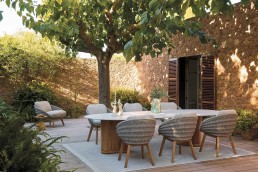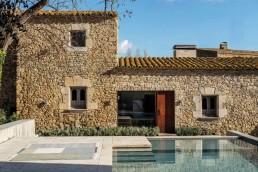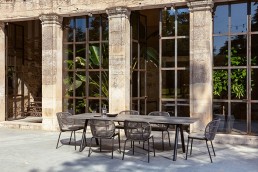NOA outdoor living is the leading outdoor experience centre in the Benelux, where outdoor trends are developed in collaboration with 30 high-end outdoor brands. For the 2025 outdoor season, NOA has identified five macro trends that will shape the way we design, furnish and experience gardens. One thing is certain: our outdoor spaces are on the brink of a true (r)evolution.
1. The Nomadic Garden
Large, labour-intensive gardens with high costs are no longer the norm. Low maintenance, compact gardens are the future. However, smaller does not mean less versatile. In 2025, it will become standard to create different ‘worlds’ within a single garden, in terms of terrace design, vegetation, and furniture. The nomadic garden symbolises travelling within your own garden. This trend responds to the sun, the seasons, and the activities of those using the space. A garden is no longer seen as a simple lawn, but as a versatile living space with ‘rooms’ to explore. Since the pandemic, the need for multifunctional outdoor spaces has grown.
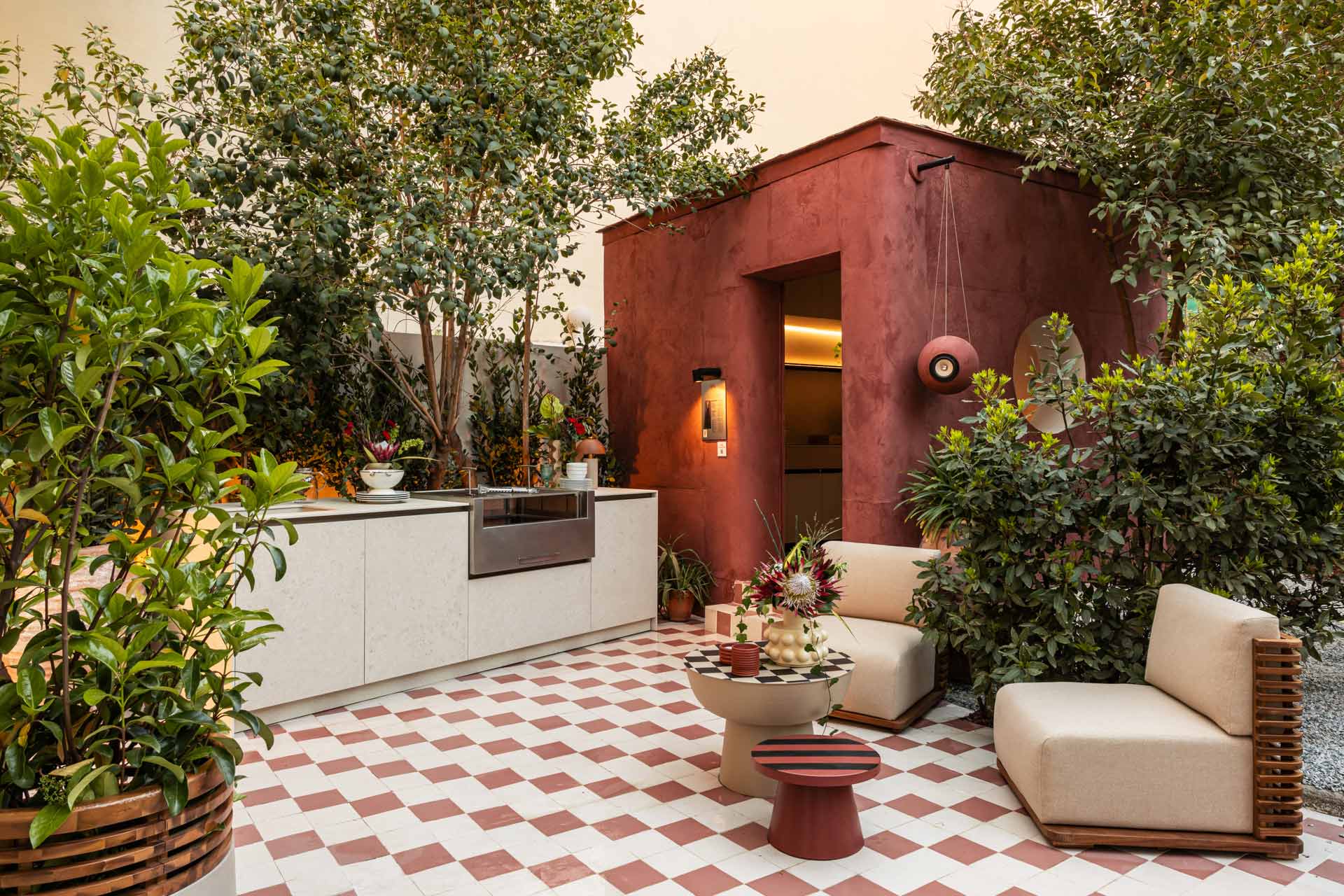
Think of an intimate reading nook hidden in greenery, a private spot for an outdoor shower, a pétanque terrain for cosy evenings with friends, a morning terrace for breakfast, or a sunny spot for an aperitif in the evening sun. Travelling through your own garden, like a nomad, is today’s trend. This new way of experiencing the garden calls for innovative products, such as mobile sauna cabins, multifunctional garden furniture, and portable lighting that can be effortlessly moved to every corner of your garden.
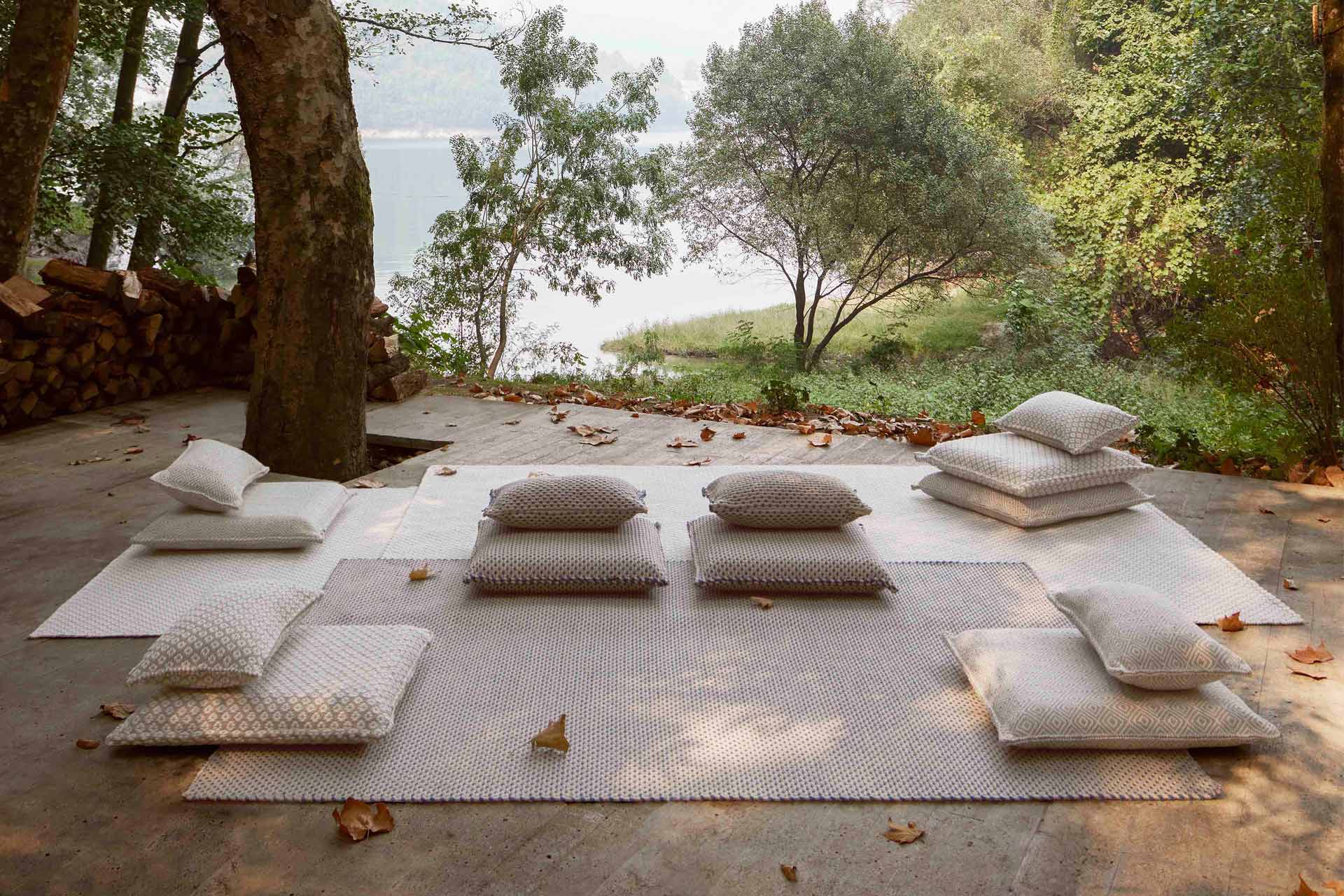
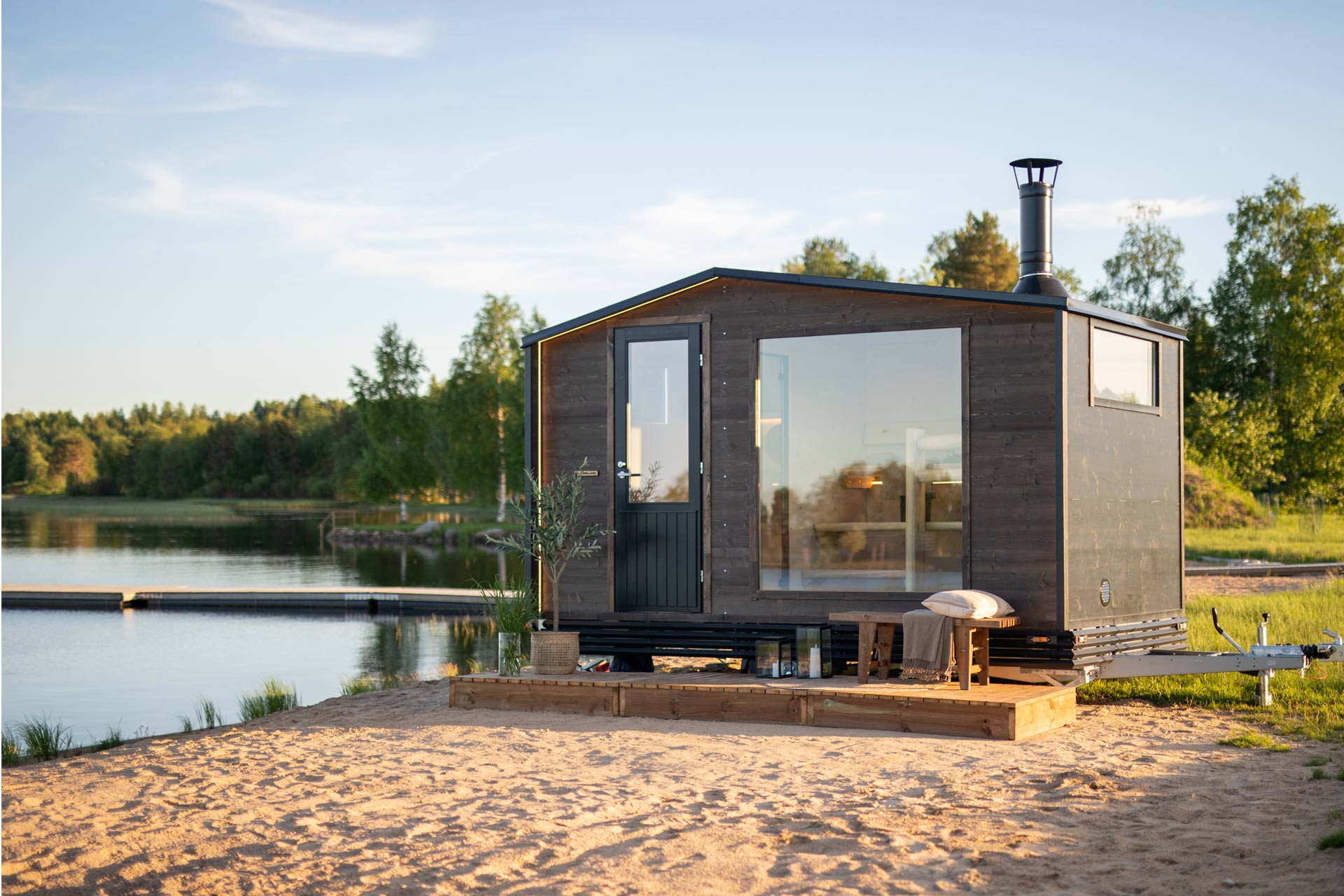

2. The high, the hanging and the basement garden
In 2025, we are becoming increasingly aware of how greenery influences our peace of mind and well-being. We are (almost) at the point of integrating less concrete into our lives and actively seeking ways to reduce our impact on the planet. Although there is still a long way to go, awareness is growing. More and more cities are investing in reducing paved surfaces: from adding more green spaces and rain gardens to developing large green parks on vacant lots. Cars are increasingly being pushed out of urban environments because the city life of the future will only remain liveable by integrating more greenery, especially in the face of extreme heat. However, space is scarce, particularly in urban areas. 05 04 This leads to gardens being increasingly created on rooftops, mezzanines, balconies, and even underground with the help of artificial lighting. One thing is clear: every square metre of greenery symbolises life. As we spend more and more time indoors, staying connected to nature is essential. This is why more resilient plant species are being used and modular designs are becoming so popular, with many brands adjusting their lifestyle approach to meet these new needs.


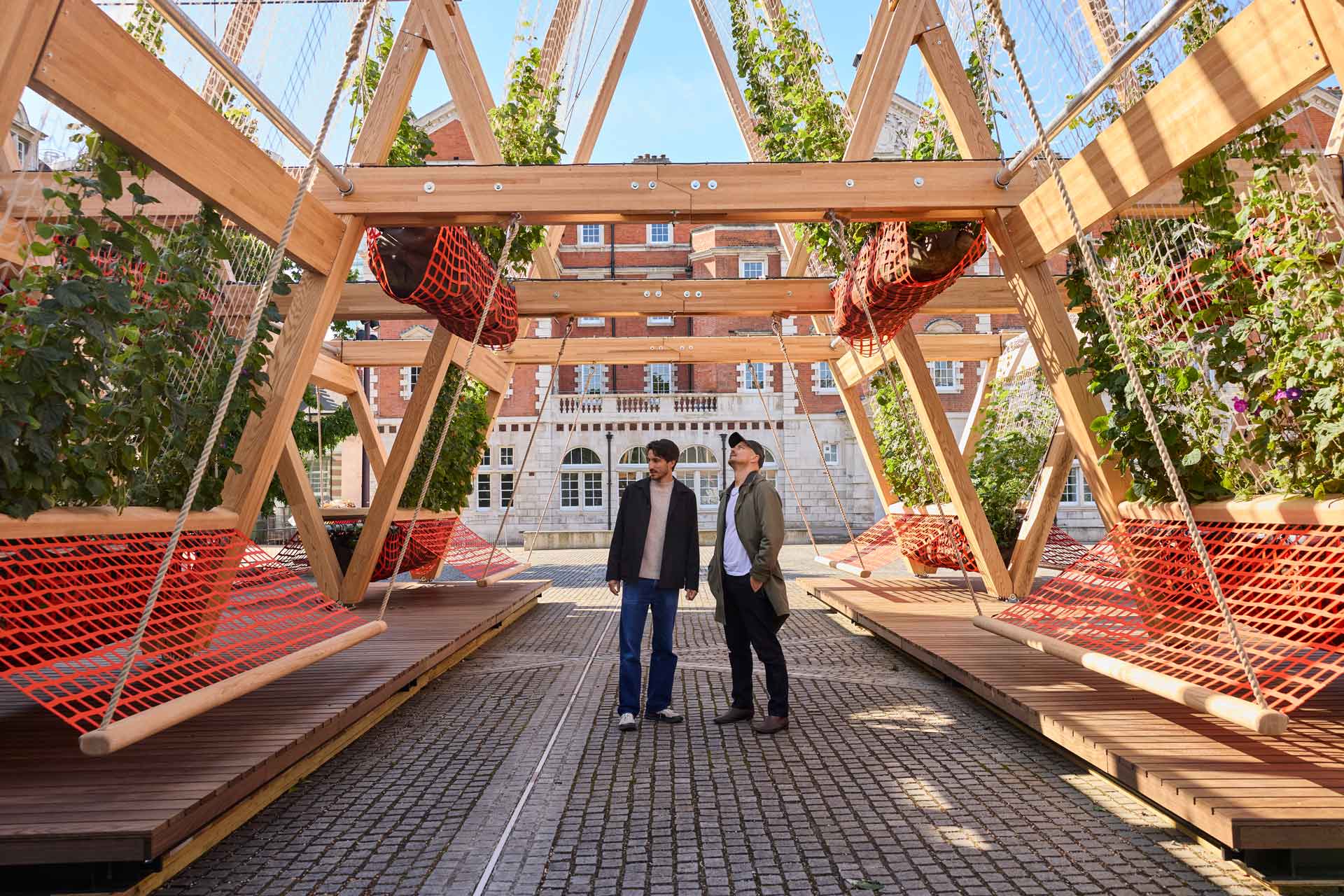
3. The dry versus the wet garden
Even the last doubters have to believe it: global warming is undeniably affecting our climate. This means that even our European gardens are slowly but surely undergoing a transformation. A striking example is vines, which suddenly stop thriving or, on the contrary, become more productive. Our gardens are facing a profound metamorphosis: one moment it is excessively hot, with extreme temperatures, while the following week a so-called rain bomb makes everything too wet. This affects not only the choice of trees and plant species, but also aspects such as permeable paving, drainage systems, shaded areas, heat buffers, and so on. In other words, gardens in 2025 must be able to withstand both extreme heat and heavy rainfall, which poses a huge challenge for landscapers and garden designers. The industry is also increasingly thinking about this and coming up with solutions to meet these new requirements.

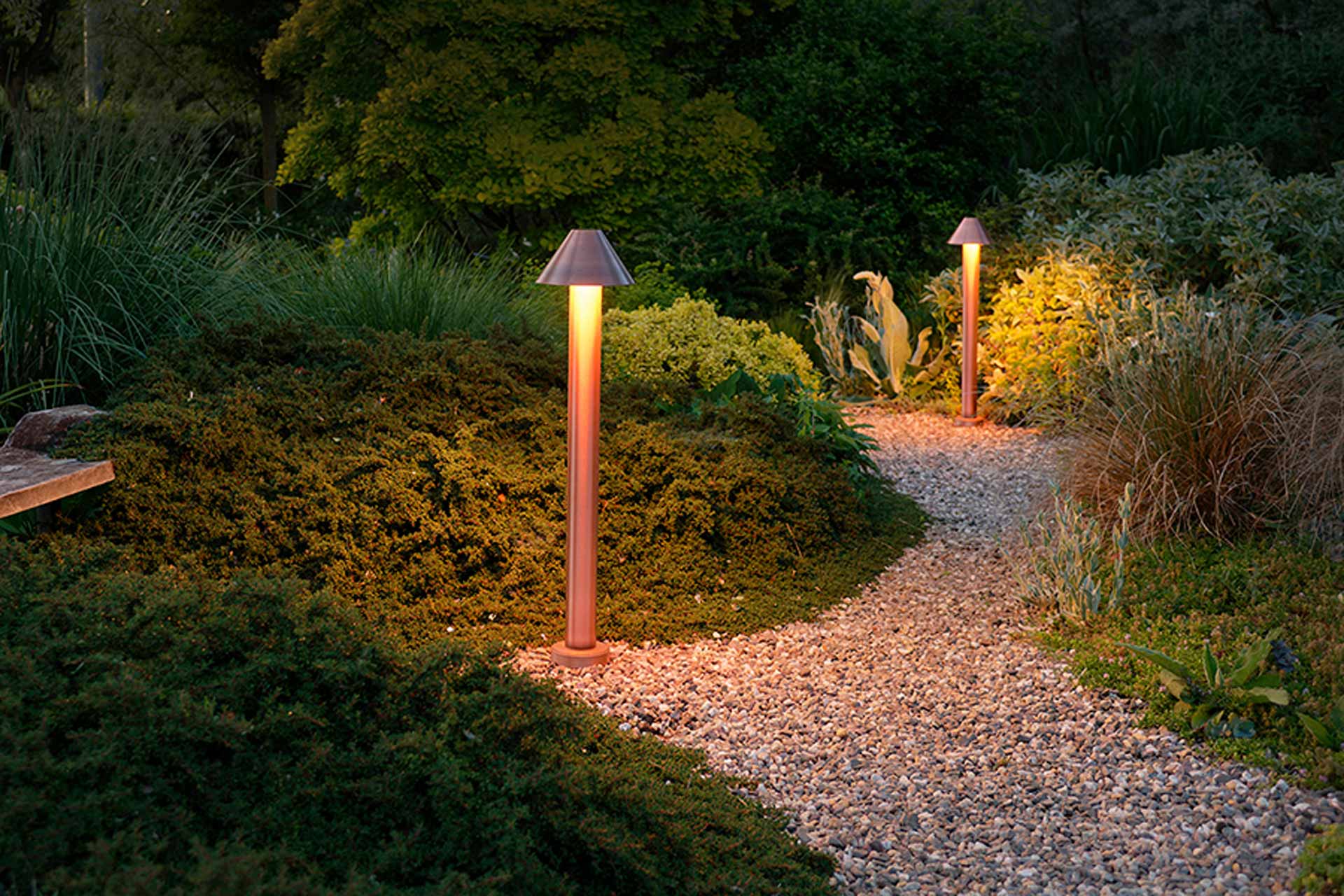



4. Collectible design for the garden
As the boundaries between exterior and interior continue to blur, we have entered a new era, with art and ornaments designed specifically for the garden. Not entirely new, I hear you thinking. True: there are already big red rabbits, dogs, diving bronze statues and everything in between. In our humble design opinion, however, these garden pieces quickly become dated and are more of a fad than objects of a designer’s thoughtful vision. What is noticeable is that more and more European creative studios are following the huge wave of collectible design – the trend in which design pieces are seen as art objects rather than functional utensils. But it doesn’t stop there. Outdoor brands are also increasingly thinking about statement pieces that, in addition to their utilitarian function, also fulfil an ornamental role.

5. Hybrid green architecture
From the architect’s drawing board to the finished structure, careful consideration is given to how plants will interplay with facades, actively shaping the architectural form. This shift ties in with the growing trend of architects doubling as interior or green designers. Boundaries between disciplines blur, and having facades overrun with wild vertical gardens – once a radical idea for the typical Belgian – is gaining popularity here as well. It is actually not so strange: if we want less concrete in our living environment, we should use gardens vertically, interwoven with cladding, brick or concrete structures. The industry is also responding to this by providing architects with building materials that offer plants, trees and even flowers an ideal vertical habitat. This is done without relying on complex, difficult-to-maintain vertical gardens with computer-controlled irrigation systems. The future belongs to green architecture – literally and figuratively.



Written by Nicolas Block, this article was originally published in Issue 2 of NOA Magazine.
Related Posts
14 January 2025
Manutti looks ahead to 2025 novelties
15 March 2021
Nanimarquina unveils Tres Outdoor rugs
14 January 2020
